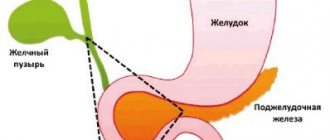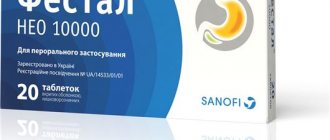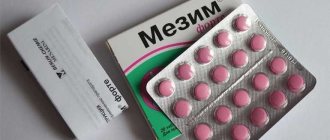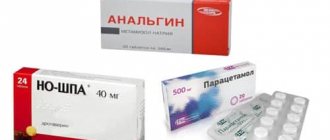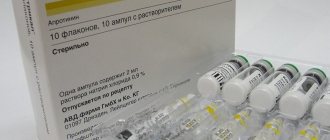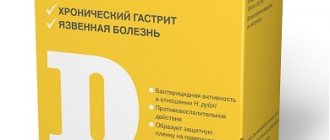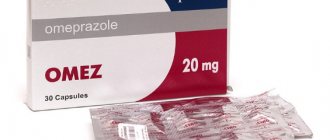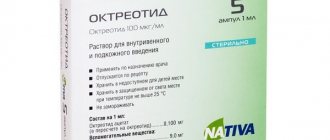Creon 10000 is one of the most popular representatives of modern enzyme products. It is used for enzyme replacement therapy for pancreatic enzyme deficiency. To ensure maximum effect, it is important to consider how to take Creon 10000 correctly. It must enter the intestines simultaneously with food. Only in this case will it be possible to reproduce the natural process of digestion, when enzymes are released in response to food entering the intestines.
Pancreatin in the drug is contained in the form of granules or minimicrospheres with an enteric coating, which are enclosed in a gelatin capsule. After entering the stomach, the capsule disintegrates, and the minimicrospheres are mixed with chyme. A large number of granules and their small (0.7-1.25 mm) sizes ensure uniform mixing of pancreatin with the contents of the stomach and unhindered evacuation into the intestine. There, the shell of the granules dissolves and the effect of the drug begins to appear.
Features of taking Creon 10,000 adult patients
Creon 10000 is dispensed from pharmacies without a prescription. However, you should not self-medicate or decide to start taking this drug without consulting your doctor.
- Of course, if digestive problems arise due to dietary errors or overeating, then it is permissible to take medication to improve the condition.
- But if the violation of food digestion is physiological in nature, then examination and prescription of medication by a doctor is a prerequisite.
The instructions for use indicate that the product should be used for medicinal purposes during or immediately after meals. This also applies to snacks. The dose of Creon 10,000 is selected by the doctor, taking into account the type of disease, the severity of its course, the composition of the food taken and the individual characteristics of the patient. The dosage of the drug is calculated based on lipase. Recommended doses for adults:
- in case of pancreatic enzyme deficiency caused by illness or nutritional disorders - 25,000-80,000 units of lipase during each full meal and 10,000-40,000 with a snack;
- for cystic fibrosis, the dose is calculated taking into account the patient’s weight - 500 IU of lipase per 1 kg of body weight simultaneously with each meal.
How to take (dosage)
Almost always, taking the drug is accompanied by a diet.
Of course, the capsules are intended for internal use. The optimal dose is selected by the doctor depending on the disease.
Only a doctor can determine the dosage
Usually, capsules are prescribed with food. You should take half a capsule before meals and one with each meal. The capsule must be swallowed without chewing or breaking its integrity, but there are exceptions, for example: the impossibility or complication of swallowing. Then, the capsule can be dissolved in liquid cold food. Many people think that medicine for the pancreas and liver can be diluted with water and stored in the refrigerator. This is not true; the drug should be taken immediately after dissolution, as it loses its medicinal properties.
While taking it, you need to drink a lot of fluid, as it causes constipation.
For cystic fibrosis, the daily number of capsules depends on the patient’s body weight. Also, the dose is very dependent on the severity of the symptoms of the disease.
Overdose symptoms
When using the drug Creon 10000 in doses exceeding the recommended ones, an overdose may occur. This condition is characterized by hyperuricemia and hyperuricosuria, which are manifested by an increase in uric acid levels, determined during a biochemical blood test. Symptoms of these conditions are:
- pain in joints and muscles;
- increased sweating;
- headache;
- dizziness;
- abdominal pain;
- nervous tics.
To eliminate hyperuricemia and hyperuricosuria, symptomatic treatment is carried out and a suitable diet is prescribed.
special instructions
It must be remembered that Creon is contraindicated for children who are only breastfed. It can be used if the child’s diet consists of at least half of complementary foods. Otherwise, you may harm the baby's health.
In addition, the use of an enzyme preparation reduces the functioning of the child’s own pancreas. Therefore, it is not recommended to take it for more than 5 days. All doses, timing of administration, frequency of use are agreed upon with a gastroenterologist. Only a doctor can prescribe enzyme treatment. It is strictly forbidden to independently treat a child with Creon.
The drug interferes with the absorption of iron, which must be taken into account when prescribing the drug.
Possible side effects
If the dosage is calculated incorrectly, or the method of taking the medication is incorrect, the likelihood of side effects increases. In such cases, the following occurs:
- flatulence,
- severe constipation
- abdominal pain of various types,
- nausea,
- vomit.
One of the reasons for their appearance is drug overdose. Such disorders appear against the background of major chronic diseases. According to statistics, they are observed extremely rarely.
In addition to dyspeptic symptoms associated with an imbalance of bifidobacteria or poisoning, an allergy may appear in the form of a rash (urticaria), accompanied by painful itching in the affected areas. In severe cases, anaphylaxis occurs. Allergic reactions appear as the body's response to the excipients included in Creon and the chemical components of its capsule, as well as to dyes and plasticizers. The latter, despite careful physical and chemical treatment, do not completely lose their toxic properties.
Therefore, the prescription of Creon for infants, as well as young children, is carried out strictly according to indications in order to avoid poor health while taking the drug. In other cases (for example, when used to prevent intestinal colic or functional disorders in the form of severe diarrhea), the use of this medicine will harm the growing body and lead to even greater disruption of pancreatic function.
Taking Creon is strictly contraindicated in the development of acute pancreatitis, exacerbation of a chronic process in the tissues of the pancreas, or in case of allergic reactions to auxiliary components. In these cases, the child feels unwell, and the digestive processes are further disrupted.
Symptoms of overdose
With long-term use of the drug in high dosage, the child develops:
- hyperuricemia - high levels of uric acid in the blood,
- hyperuricosuria - formation of stones.
If this is discovered, you need to urgently interrupt therapy and consult a doctor.
Also in the literature, cases of detection of intestinal strictures (narrowing) are described. Therefore, it is recommended to strictly adhere to the instructions for use for children when treating a child with Creon. If you suspect any changes in the intestines, you should contact a pediatrician or gastroenterologist.
In addition to the listed disorders that occur with an overdose of the drug, the development of infection is theoretically possible. The causative agent is often rotavirus. This is due to the production of the enzyme: it is obtained by processing dried pig pancreas tissue. Raw materials are carefully processed using various methods to eliminate the possibility of human infection, but with the emergence of new or previously unknown viruses, such an outcome cannot be completely excluded.
Contraindications for taking Creon 10000
The drug is well tolerated. By normalizing digestion, the drug does not affect the motility of the gastrointestinal tract, the functioning of the biliary tract or the secretion of bile.
- Therefore, the list of its contraindications consists of one point: individual intolerance to the components of the drug.
- It is not recommended to take the drug during an exacerbation of chronic pancreatitis and in the acute form of the disease.
( 8 ratings, average: 4.75 out of 5)
Indications for use
"Creon" and its analogues are used in all situations where primary or secondary insufficiency of the synthesis of pancreatic enzymes develops, or there is a mechanical obstacle to their entry into the intestine. The most common situations are:
- chronic pancreatitis, except for the acute stage;
- cystic fibrosis in children;
- pancreatectomy;
- malignant neoplasms of the pancreaticoduodenal region;
- obstruction (blockage) and narrowing of the excretory ducts of the pancreas;
- pathological formations of the common bile duct;
- in old and senile age (due to general involution of enzyme systems);
- after operations on the stomach and gall bladder;
- in complex therapy of chronic cholecystitis, hepatitis and cirrhosis (due to insufficient secretion of bile).
There are other indications for the use of the drug "Creon" and analogues, which are determined by the attending physician, depending on the diagnosis.
For example, a healthy person can take this remedy to avoid painful feelings after a New Year's feast. "Creon" will help you cope with fatty, fried foods faster with less stress on your own pancreas.
Analogues of the drug
How many times to take Creon 10,000 for adults, the duration of use and dosage for pancreatitis and other gastrointestinal problems is determined individually, all this must be discussed with your doctor. The medicine can be used once, in courses or continuously. All this depends on the severity of the disease. Sometimes you need to take the medication constantly, but at the same time adjust the dose. During remission, reduce, and in case of relapse, increase. Sometimes it can be combined or replaced with other medications.
If there are contraindications, it is necessary to select analogues, among which the following should be highlighted:
- "Mezim Forte";
- "Pancreatin";
- "Biozyme";
- "Mikrazim";
- "Panzim Forte";
- "Hermital".
However, before choosing an analogue for yourself, you should definitely read the composition and instructions for use of the medicine, since it may well be that it is not suitable for the indications. Even if the “Creon” analogue is structural, that is, it contains the same enzymes, it can be presented in a different dosage form. This can significantly affect the effect of the drug, since the tablets dissolve in the stomach, and Creon is designed so that the enzymes begin to act only in the intestines, which significantly increases its effectiveness. In addition, for some analogues the dosage may not coincide with the recommended dose of Creon.
Release forms
Creon belongs to the group of drugs that improve digestion. This is a pancreatic enzyme, the main component is pancreatin.
When taking any enzymatic composition, it is important that the substance, bypassing the aggressive environment of the stomach, enters the duodenum. Therefore, the drugs are available in the form of capsules or tablets, protected by a special coating that is soluble in the intestine (alkaline pH) and insensitive to hydrochloric acid (acidic pH).
For the pharmaceutical industry, the question of how to give enzymes to young children who cannot yet swallow solid dosage forms has long remained relevant.
Important! The peculiarity of Creon is that inside the capsule there is not a powder, but acid-resistant small granules that can be added to the baby’s food or drink without fear of the child choking. Pancreatic enzymes are contained inside the granules.
Release form Creon 10,000 ─ two-color capsules made of hard gelatin, transparent body, brown lid. Inside there are gray microgranules. Available in packs of 10 capsules, in a cardboard box of 1, 2, 3 blisters, in darkened plastic bottles of 20, 50, 100 pcs. After opening the package, the drug is suitable for use for six months.
Creon for gastritis
Creon is a pancreatin that includes valuable enzymes such as lipase, amylase and protease. It differs from traditional drugs in its improved form and increased concentration of enzymes. In shape, Creon is microspheres ranging in size from 1 to 1.7 mm, covered with a shell that dissolves in the intestines.
The drug is contained in a gelatin capsule that protects the contents from destruction by pepsin and hydrochloric acid. The optimal action of Creon occurs in an acidic environment pH from 4 to 7. The drug quickly mixes with food in the stomach. The concentration of lipase in one microsphere is more than double its content in the Mezim Forte tablet and is significantly higher than in Festal.
Creon compensates for the lack of pancreatic function, promotes the processing of proteins, fats and carbohydrates, which improves absorption processes in the intestines and eliminates dyspeptic symptoms of gastritis. After administration, the drug capsule quickly dissolves in the stomach, releasing many microspheres that mix well with the bolus of food. In the intestines, their shell dissolves and releases enzymes that promote the breakdown and absorption of nutrients.
For gastritis, Creon is taken with meals without chewing. For children under one year of age and patients with difficulty swallowing, the capsule is opened and mixed with a small amount of food or liquid. The mixture is taken immediately after preparation. It is necessary to take the drug with a sufficient volume of liquid (more than half a glass). The dose of Creon is selected by a gastroenterologist depending on the stage of gastritis and the diet being followed.
The danger of uncontrolled treatment with Creon: a doctor’s opinion
A good drug, when following the advice of incompetent people, is not only ineffective (some manage to treat heartburn, take Creon out of heavy drinking), but also exhibits negative properties. Allergic reactions are known in the form of urticaria, nausea, facial swelling, increased pain in the epigastrium, and stool upset.
When examining a patient, it is possible to detect a high level of uric acid in the blood plasma. This causes joint and muscle pain, dizziness, sweating, and twitching of the facial muscles. The drug is discontinued, although not all doctors are sure that a minor disease led to the negative effects.
Taking Creon should be done strictly after consultation with a doctor. There are many diseases for which other enzymes in combination with bile are more useful. You should not fall for advertising tricks of unknown persons and untested methods of therapy. Creon does not interfere with pathology, but only helps support the absent or weakened pancreas.
Dosages and rules of administration
The drug is intended for oral use. A single dose is divided in half or into three parts, half or a third of the dose is drunk before meals, and the rest is taken with food. The dosage depends on the degree of the disease state and the components of the diet. The amount of lipase in one dosage should not exceed 10 thousand units when taking the drug "Creon". The course of treatment with this drug is determined by the doctor based on the dynamics and condition of the patient.
In order for the drug “Creon” to work correctly, it is recommended not to break the capsule shell, but to drink the whole one, using water for better swallowing.
If the patient, due to special reasons, cannot swallow the whole capsule, then the shell is divided into two parts and the granules are poured into liquid food or a liquid with an acidic environment (less than 5), and then the mixture is swallowed. If the granules are chewed, crushed or mixed with alkaline food, then the shell covering the minimicrospheres may collapse, which will lead to the loss of activity of their contents under the influence of gastric juice.
The dosage of lipase for insufficient pancreatic function is determined by the degree of disruption of its functioning and the amount of fat in the patient’s diet. Its quantity, when used three times a day during breakfast, lunch and dinner, ranges from 20-75 thousand units.
At the initial stages of treatment, the amount of lipase in one dose should average from 10 to 25 thousand units, and then, depending on the condition, it is increased.
Feature of the drug
The drug "Creon 10000" is an effective and reliable remedy used for disorders of the digestive system. Nowadays, many people suffer from stomach problems. The most common reasons for this are:
- poor nutrition;
- abuse of fatty foods and alcoholic beverages;
- excess weight.
Poor nutrition leads to the fact that digestive enzymes are not secreted in the required quantities, resulting in vitamin deficiency and serious health problems that require the use of enzyme preparations. One of these medications is Creon 10000.
It is used for insufficient production of pancreatic enzymes. The drug gradually dissolves in the gastrointestinal tract, the active components are mixed with the intestinal contents and contribute to their much better distribution. In the small intestine, the drug shell dissolves and enzymes are released, which then break down fats, proteins and carbohydrates. As a result of this, the body is gradually saturated with microelements and beneficial substances.
The drug contains enzymes that are essential for the digestive system. In a healthy person, the pancreas independently produces them in sufficient quantities. However, if the activity of this organ is impaired for some reason, then there will be very few enzymes and food will not be able to be digested normally. This will lead to disruption of digestion processes, as well as a lack of nutrients in the body.
The drug "Creon" helps to compensate for the lack of enzymes. It contains amylase, lipase and protease. These components are obtained from the pancreas of pigs.
The medicine exerts its effect in the intestinal lumen. There is no absorption, which has been proven in clinical testing. This is easy to explain, since enzymes are proteins in their structure and are broken down into peptides and amino acids.
Creon price
The cost of this drug is determined by the amount of active substance and the pricing policy of the point of sale. Most pharmacies in Moscow offer a package of 20 capsules for 280-340 rubles, but this is the lowest dosage of pancreatin. The full price picture is available for study in this table:
| Dosage | Capitals | E Pharmacy |
| 10000 units | 225 rub. | 283 rub. |
| 25000 units | 463 rub. | 557 rub. |
| 40000 units | 1290 rub. | 1419 rub. |
Creon's help in the treatment of gastritis and stomach ulcers
In the treatment of pathologies of the stomach and intestines, Creon is considered an auxiliary remedy that eliminates secondary pancreatic insufficiency. The targeted action of the drug is used in the treatment of diseases of the pancreatic gland and associated cholecystitis. Inflammation of the gallbladder tends to spread through the sphincter of Oddi to the tissue of the pancreas and duodenum.
Gastritis and peptic ulcers necessarily disrupt the digestion of the bolus of food when it enters the stomach. Here, enzymes from gastric juice and hydrochloric acid must act on food particles.
In the treatment of pathologies of the stomach and intestines, Creon is considered an adjunct to eliminate secondary pancreatic insufficiency
They ensure the creation of a mass accessible for further digestion, mixing and moving it in a spiral to the pyloric sphincter into the duodenum. A decrease in acidity during atrophic gastritis leads to a decrease in the functional activity of gastric juice.
The production of bile and pancreatic enzymes depends on how the stomach receptors “evaluate” the “upcoming work”. The inflammatory process against the background of erosive gastritis or ulcers alters the passage of signals and contributes to inappropriate preparations. Food enters the intestines insufficiently processed, the need for enzymes increases sharply, but there are not enough of them.
For Creon for gastritis, the doctor determines the indications. The type of inflammation, the nature of secretion, and the capture of the pancreas are taken into account. The need arises more often in hypo- and anacid conditions. First of all, drugs containing pepsin (Pepsidil, Pepsin, Abomin) are used.
They affect the gastric stage of digestion. Eliminate belching, pain, nausea. Impaired absorption in the intestinal wall leads to insufficient intake of vitamins, fatigue, and drowsiness. Creon pancreatic enzymes are recommended to replace inhibited synthesis.
Sources:
- https://zhkt.guru/gastrit/lechenie-5/lekarstvo/fermenty-1/kreon-1
- https://pankreatit03.ru/kreon-pri-zabolevaniyah-zhkt.html
- https://zhkt.ru/preparaty/kreon/10000.html
- https://med.vesti.ru/articles/lekarstva-i-preparati/kreon-instruktsiya-po-primeneniyu/
- https://womanadvice.ru/kreon-dlya-detey-kogda-i-kak-pravilno-davat-malyshu-preparat
- https://promuzhikov.club/ponos/kak-prinimat-kreon-pri-vospalenii-podzheludochnoj-zhelezy.html#i-27
Analogues of Creon
Due to its high cost, this drug is not available to all categories of the population, especially if it is not intended to be a long-term treatment, but to be taken infrequently according to the situation. Doctors call Mezim the most famous and effective replacement: it also works on pancreatin, only at a lower concentration. In addition to it, the following may be prescribed:
- Pancreatin;
- Penzital;
- Pangrol;
- Micrasim;
- Hermital.
Negative phenomena and analogues
Side effects during treatment with this multienzyme drug predominated in the digestive tract. The most common symptoms were abdominal pain, slightly less commonly diarrhea, and nausea, vomiting, constipation and bloating. In addition to dyspeptic disorders, there were rare side effects in the form of rashes, urticaria and itching.
All pancreatin preparations can be divided according to dosage form and composition, which determine the bioavailability and effectiveness of the drug. Analogues in the pharmacological group are enteric tablets:
- Gastenorm forte;
- Mezim forte;
- PanziCam;
- Panzim Forte;
- Pakreazim;
- Pancreatin-LecT;
- Penzital;
- Enzistal;
- Unienzymes MPS;
- Pankreoflat, which in addition to pancreatin contains dimethicone for bloating and flatulence.
Another combined form of enzyme preparations is represented by enteric tablets Festal. It contains pancreatin, bile and hemicellulase. Manufacturer: Aventis Pharma (India).
Dosage forms similar to Creon have:
- Mikrasim and Panzinorm, which are produced in the form of capsules with pellets inside;
- Pangrol – capsules with mini-tablets;
- capsules with Ermital microtablets, which are the main competitor of Creon.
The frequently asked question: “Which is better: Ermital or Creon, Creon or Mezim?” can be easily answered by contacting a qualified doctor. According to reviews of leading domestic specialists and scientists, Creon is the No. 1 drug of choice for the treatment of pain and enzymatic deficiency in chronic pancreatitis.
Creon is a popular enzyme preparation containing pancreatin components in an optimal ratio (amylase, lipase and protease). The advantage over other similar products lies in the release form - microgranules up to 1.2 mm in size in a gelatin capsule. This makes it possible to ensure protection of the contents from hydrochloric acid, the beginning of dissolution in the alkaline environment of the small intestine, uniform mixing with food and a fairly rapid action. But you need to know how to take Creon in order to achieve the best possible results.
Medication "Creon": patient reviews
This product belongs to a new generation of drugs, since it is produced in the form of enteric capsules with the contents in the form of complex granules. Unlike the drug Creon, its analogues are produced in tablet form, which reduces the function of enzymes, which, when the tablet shell dissolves, enter the stomach and are exposed to hydrochloric acid. As a result, a small part of them reaches the intestine, where they must perform their function of breaking down proteins, fats and carbohydrates.
Thanks to the capsulated form of release of the drug "Creon", reviews of its best therapeutic effect can be heard from many patients who have switched to treatment with this drug. This medication has established itself as a fast-acting, effective drug, which is considered the best in its pharmacotherapeutic group.
Creon for babies
For children under 1-3 years of age, the medicine is prescribed only according to strict indications. In most cases, this is cystic fibrosis, in which treatment is carried out for years or for life. Much less frequently, Creon 10000 is used for infectious pathologies in infants.
Note! A child’s (and even an adult’s) body is not able to break down and digest the peels of most fruits and vegetables, sesame seeds, flax seeds, etc. Thus, the presence of pieces of carrots and tomato peels in a child’s stool is normal and does not indicate impaired functioning of the pancreas.
For newborns and babies who cannot swallow on their own, the capsule is opened and the contents are added to food or drink. This can be fruit juice (apple, pear, pineapple) or vegetable puree. This method of use is convenient because the elements of the drug remain intact and are easily delivered to the intestines. Leftover food after feeding cannot be stored
Important! Juice or food with Creon granules must be given to the baby immediately, otherwise the drug will be destroyed. It is also necessary to ensure that your child is adequately hydrated to reduce the risk of constipation.
The medicine is not used for colic and regurgitation in infants, since it has no proven effectiveness in these conditions. It is highly not recommended to give pancreatin to children without a doctor's prescription or for preventive purposes. This can lead to the fact that a normally working gland stops producing its enzymes in sufficient quantities.
Symptoms and treatment of gastritis with high stomach acidity
Speaking about this pathology, it is customary in the clinic to distinguish several main syndromes.
1. Pain syndrome. The pain is usually localized in the epigastric region, in the upper abdomen. They are moderate in nature and have a direct connection with food intake. Most often, patients report so-called “hunger” pain.
They occur on an empty stomach, when the stomach is empty of food. The occurrence of pain is associated with irritation of the pyloroduodenal zone by acidic gastric contents, as a result of which the spastic contraction of the muscles of the organ increases. Sometimes the pain can radiate to the lower parts of the abdomen.
2. Gastrointestinal dyspepsia syndrome. It includes such features as:
- Decreased appetite;
- Nausea before or after eating;
- One-time vomiting after eating, if the diet is not followed;
- Belching, most often odorless;
- Stool instability: alternating constipation and diarrhea;
- Rumbling in the stomach, flatulence;
- Persistent painful heartburn;
- White coating on the tongue.
3. Asthenovegetative syndrome. It manifests itself as general weakness, fatigue, apathy, and decreased performance. Hypovitaminosis may occur, especially vitamin B12. Then brittle nails, hair loss, and dry skin occur.
How to identify gastritis with increased secretion
After analyzing the patient’s complaints and examining him, the attending physician prescribes fibrogastroduodenoscopy to verify and confirm the diagnosis.
An endoscopist with hyperacid gastritis observes pronounced hyperemia of the mucous membrane, its swelling, infiltrative processes, and hemorrhages.
These changes can be focal or diffuse. If necessary, a control biopsy is prescribed for a morphological study of the cellular composition.
To distinguish gastritis with increased secretion from gastritis with decreased secretion, a mandatory method is to study gastric secretion. One of the substances is injected into the patient's body: gastrin, pentagastrin or histamine.


